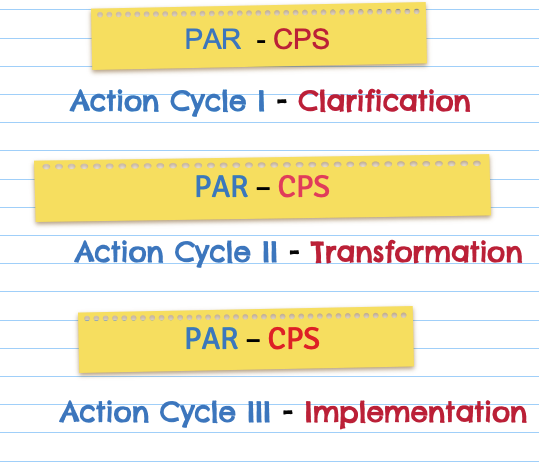Participatory Action Research for Creative Problem Solving —--PAR for CPS-
PAR engages the CPS as the problem solving model for social change. In this instance, education.
CPS serves as the creative engine, fostering innovation, collaboration, and out-of-the-box thinking. It encourages individuals to explore diverse perspectives, generate novel ideas, and approach problems with a spirit of curiosity and experimentation as the key preliminary step toward decision making.
Participants learn and engage in the creative process, weave and reflect on how it might apply in education, and contemplate affect of creative process for leadership.
PAR and CPS are structured proccess that both acknowledge ambiguity as as reality. The ways in which creative process might align with subjects for pedagogy and affect on leadership forms the core questions of the qualitative study.
Uniting CPS and PAR
PAR methodology provides the structured approach needed to navigate the complexities of social challenges. It guides stakeholders through a systematic process of problem identification, analysis, and resolution, enabling them to delve deep into the root causes of issues and develop targeted interventions for sustainable change.
When CPS and PAR are integrated, they create a dynamic problem-solving synergy. CPS techniques such as brainstorming, mind mapping, and lateral thinking complement PAR's analytical rigor, enhancing the quality and creativity of solutions. By combining divergent and convergent thinking processes, CPS through PAR empowers individuals and communities to approach social issues with both creativity and precision, leading to more effective and sustainable outcomes.

